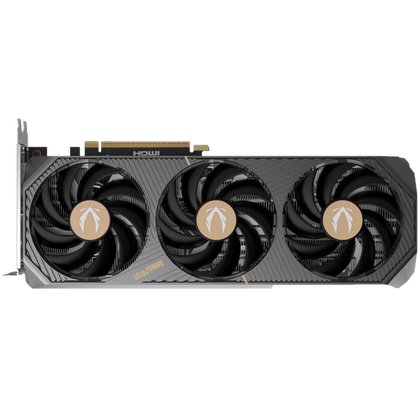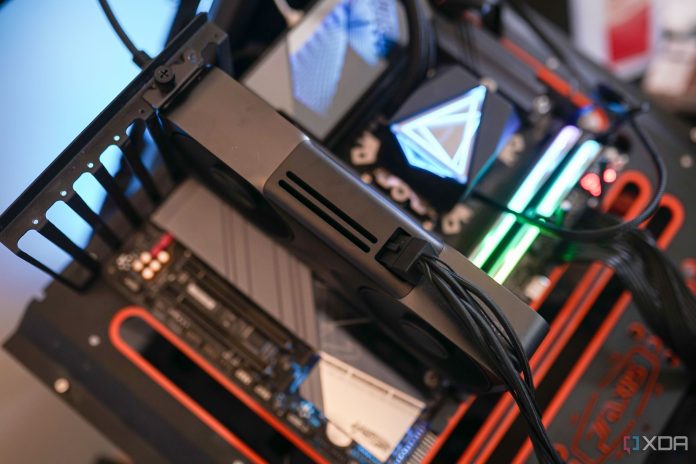Three-fourths of the year has already come and gone, and no new generation of CPUs or GPUs is on the horizon. If you’re in the market to build a gaming PC, you need to ensure it’s prepared for the games of 2026. PC gaming shows no signs of becoming any less demanding than it already is, so a premium gaming rig won’t come cheap. That said, you don’t need to go overboard with your components to tackle the titles of 2026. This list will allow you to enjoy top-tier 1440p gaming without any major compromises.
CPU and GPU
First things first
The graphics card might be the most critical component of your PC, but the CPU is only slightly behind, especially today. The most demanding titles have started to push CPUs far beyond what they used to, and while 6-core chips are still fine for most gaming-only builds, you can finally consider 8-core CPUs. If you’re spending around $1,500–$1,700 on a gaming PC for 2026, 8-core options like the Ryzen 7 7700 or Ryzen 7 9700X are worth the premium.
You might not need the additional cores in every game, but they’ll come in handy in titles that can truly leverage them. Besides, for just $60–$70 more, you can improve your 1% low FPS, multitasking capabilities, and occasional productivity use. I’d avoid Intel CPUs for now, since they don’t offer similar value-for-money, consume more power, and don’t offer the upgradability afforded by AMD’s AM5 socket.
For the graphics card, I’d recommend the RTX 5070 Ti, now that prices have fallen to the MSRP range in August. They’re likely to remain so until the launch of the RTX 50 Super series in December or January. The RTX 5070 Ti is a fantastic GPU for excellent 1440p and decent 4K gaming, especially if your favorite titles are heavy on ray tracing. It has 16GB of VRAM, which won’t become a bottleneck anytime soon. If you can wait, the RTX 5070 Ti Super is rumored to go on sale for the same price, but with more VRAM.
If your budget is closer to $1,500 than $1,700, AMD’s RX 9070 XT is also a great 1440p GPU for around $100 less (based on current pricing). You’ll get inferior ray tracing performance compared to that of the RTX 5070 Ti, but it’s neck-and-neck with the Nvidia card in rasterized performance. I’d like it to be priced closer to its MSRP of $600, but you’ll have to wait for that to happen.
Enthusiasts can buy the RTX 5080 or RTX 5090 if they have the cash to spare, and 4K gaming is a must-have. In that case, the CPU should ideally be the Ryzen 7 9800X3D, as these high-end GPUs can truly bring out the best in this Ryzen X3D CPU.

AMD Ryzen 7 7700X
$251 $399 Save $148
- Brand
- AMD
- CPU Model
- Ryzen 7 7700X
- CPU Socket
- AM5
- Cores
- 8
- Threads
- 16
The AMD Ryzen 7 7700X is one of the most powerful processors on the market right now, with 8 cores and 16 threads for top-tier desktop performance.

Zotac Gaming GeForce RTX 5070 Ti Solid SFF OC
$810 $1000 Save $190
The Zotac RTX 5070 Ti Solid SFF OC is one of the more affordable variants of Nvidia’s mid-range graphics card, and offers excellent 1440p and decent 4K gaming.
Motherboard, RAM, and storage
Securing the foundation
As far as an AM5 motherboard goes, you don’t need to spend a lot more than $200 to get a good one. For instance, a $200 B650 or B850 motherboard will have all the connectivity and durability features you’d want in your new gaming PC. Whether it’s a Gen5 M.2 slot, Wi-Fi 6E, 2.5Gb LAN, USB-C, or a well-built VRM design, a B850 motherboard will provide you with each of those features.
You can also pick an X670 or X870 motherboard, considering many models fall in the same price range as that of B650 and B850 chipsets, and offer a mandatory PCIe 5.0 slot for the GPU, USB4 (40 Gbps) ports, and Wi-Fi 7 (on some models).
For DDR5 memory, a 6,000MT/s CL30 32GB kit remains the sweet spot for Ryzen systems, but if, say, a DDR5-6400 kit is available for around the same price, feel free to buy that. There are diminishing returns beyond 6,000MT/s, and you might also run into stability issues with faster kits, once you populate all the RAM slots on your motherboard.
On the storage front, a 2TB Gen4 NVMe SSD is all you need for your gaming rig, unless your productivity workloads require faster transfer speeds. Gen5 SSDs remain useless for gaming, so buying a drive like the XPG Gammix S70 Blade or Samsung 990 Pro is still the smart choice. You’ll not only get top-tier Gen4 speeds, but all the benefits of a DRAM cache.

Gigabyte X870 Eagle WiFi7
$229 $255 Save $26
The Gigabyte X870 Eagle WiFi7 motherboard is one of the most affordable X870 motherboards out there, and it’s feature-packed for your modern gaming PC.

TeamGroup T-Force Delta RGB DDR5
The TeamGroup T-Force Delta RGB DDR5 is one of the most trusted and high-performing memory kits on the market. For lovers of the white theme, it’s a great pick as it combines a striking design with a beautiful RGB implementation.

Samsung 990 PRO SSD 2TB
$150 $200 Save $50
Samsung’s 990 Pro is one of the fastest PCIe 4.0 M.2 drives you’ll be able to buy. It’s slightly expensive, but with 2TB of capacity, speeds of up to 7,450MB/s, and a DRAM cache, it’s one of the best SSDs for gaming.
Case, cooler, and power supply
Finishing touches
An 8-core Ryzen 7 7700X or 9700X doesn’t need an AIO liquid cooler, but it all depends on your preferences. If you want one for esthetics, you can get a capable 360mm model with RGB and a fancy waterblock for under $100. Otherwise, budget air coolers can handle almost any CPU, and you can get a great model for less than half the price of that AIO. The Thermalright Phantom Spirit 120 is famous for its exceptional performance per dollar, or you can opt for the be quiet! Pure Rock Pro 3.
For the case, I’ll still recommend the NZXT H9 Flow even for 2026, since it looks great, offers plenty of space, comes in a dual-chamber configuration, and will easily last you multiple builds. The Corsair 4000D RS ARGB is also a great alternative due to its modular design, three pre-installed ARGB fans, and support for reverse connection motherboards.
Finally, for the power supply, prices have fallen enough that you should get an 850W Gold unit with ATX 3.1 and PCIe 5.0 rating, or a 1000W unit at the maximum, in case you want to upgrade to a stronger GPU in the future. The MSI MAG A850GL would be my recommendation, considering its next-gen specs and affordable pricing.

Thermaltake TH360 V2 ARGB Sync
The Thermaltake TH360 V2 ARGB Sync AIO liquid cooler is one of the most value-packed cooling systems you can buy. It is not only more than enough for any 6-core CPU but will keep pace with any future CPU upgrades you make. The ARGB fans and pump can be customized to sync with the overall RGB theme of your build.

NZXT H9 Flow
$100 $165 Save $65
- Brand
- NZXT
- Motherboard Size (Max.)
- ATX
- Graphics Card Size (Max.)
- 435 mm
- 3.5″ Drive Slots
- 2
- 2.5″ Drive Slots
- 4+2
The NZXT H9 Flow is a premium mid-tower chassis from a reputable brand that offers a unique take on the traditional PC case design. It has ample support for water cooling, excellent thermal performance, and a gorgeous aesthetic.

MSI MAG A850GL
$110 $140 Save $30
The MSI MAG A850GL is one of the latest ATX 3.1 power supplies with 850W of 80+ Gold power efficiency, perfect for future-proofing your gaming PC.
Premium 1440p gaming rig for 2026
This build will cost you around $1,800, which isn’t cheap, but you’ll be able to handle anything the next year throws at your rig. The 8-core Ryzen processor and RTX 5070 Ti GPU form a potent combination, ready to tear through any demanding title, ray tracing or not. DLSS4 will boost your FPS, thanks to upscaling and frame generation, and your base FPS will be high enough that frame generation doesn’t introduce too many problems. The AM5 socket motherboard will allow you to drop in a new CPU in a few years, and the H9 Flow and A850GL will ensure you can make any other upgrades you want in the future.
